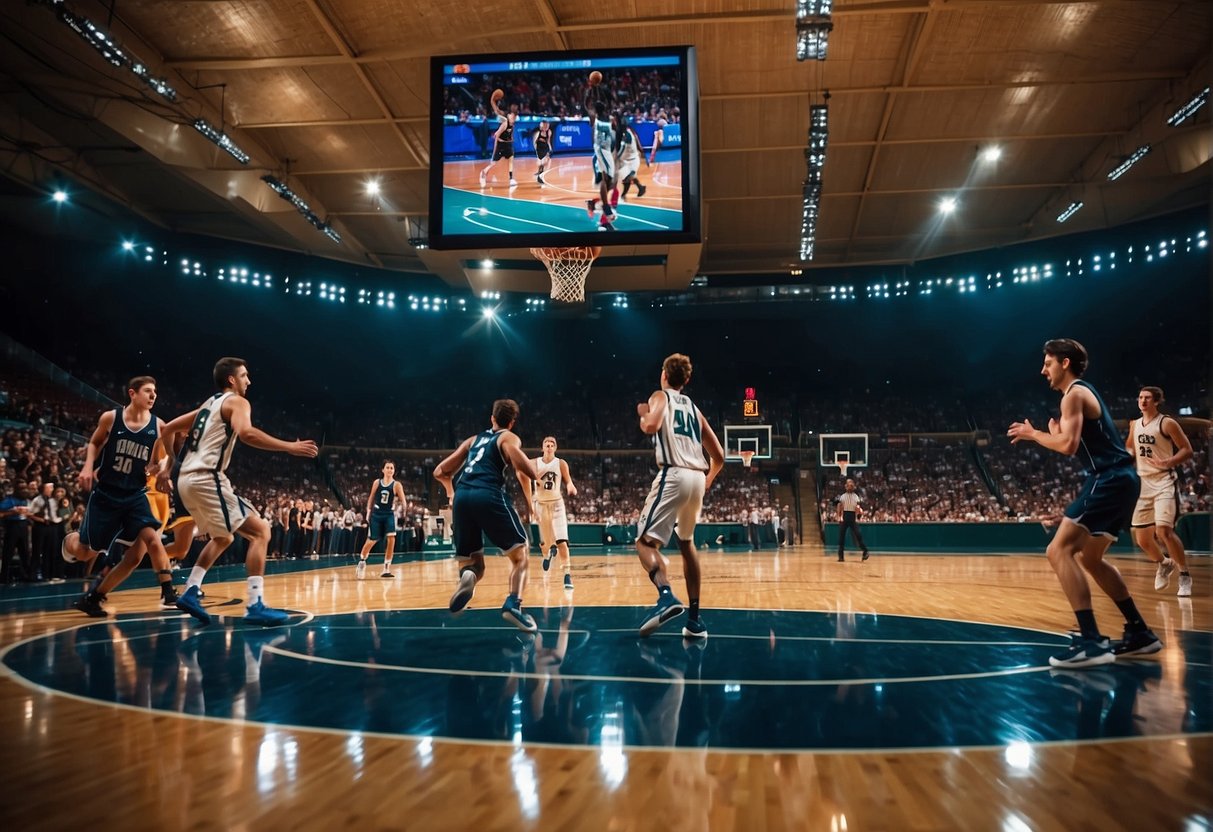📦 FREE Shipping
How Many Calories Do You Burn Playing Basketball 2024? Surprising Facts

Shoot, score, and slim down with “How Many Calories Do You Burn Playing Basketball? Surprising Facts,” where we explore the dynamic calorie-burning effects of this fast-paced, full-court sport.
How Many Calories Do You Burn Playing Basketball?
Calories represent the energy you consume through food and drink. Your body uses this energy for all your activities, from intense physical exercise to simply breathing. During a basketball game, your body requires more energy than usual, which means burning more calories.
MET, or Metabolic Equivalent of Task, measures the energy expenditure of different activities. Basketball is a high MET activity, signaling a higher calorie burn than other exercises. To illustrate, shooting hoops alone has a MET value of 4.5, while a full-court game scores even higher!
Check out how your body weight and game intensity determine the calories burned playing basketball:
| Body Weight (lbs) | Half-Court Game Calories/hr | Full-Court Game Calories/hr |
|---|---|---|
| 150 | ~390-415 | Depends on MET value |
| 180 | ~386 (shooting baskets) | Depends on MET value |
| 210 | ~572 | Depends on MET value |
Health experts typically recommend that adults engage in at least 150 minutes of moderate-intensity exercise or 75 minutes of vigorous-intensity activity each week. Playing basketball helps meet these recommendations on physical activity for health while enjoying a dynamic and entertaining sport.
Calculating Calorie Burn During Basketball

When you hit the basketball court, not only are you having a blast, but you’re also torching calories! Your energy expenditure is through the roof, with every dribble, shot, and defensive stance contributing to the burn.
You can use a calorie calculator designed for basketball to estimate how many calories you have burned. It factors in your weight, the intensity of the play, and the duration in minutes.
Here’s a quick look at how calculators estimate your burn:
MET Value: This is the Metabolic Equivalent Task value, a standard that estimates the energy cost of a physical activity. For shooting hoops, it’s around 4.5.
Your Weight: Heavier individuals tend to burn more calories. It’s all about how much energy your body needs to move.
Quick Calorie Estimation Table:
| Body Weight | 30 Minutes | 60 Minutes |
|---|---|---|
| 150 lbs | ~270 cal | ~540 cal |
| 180 lbs | ~320 cal | ~640 cal |
| 200 lbs | ~355 cal | ~710 cal |
Remember, these numbers are estimates. Actual calories burned can vary based on your age, specific body weight, game intensity, and even environmental factors.
Factors Influencing Calorie Expenditure

Physical Factors
Your body is unique, and so is the way it expends energy. Physical attributes such as weight, age, gender, muscle mass, and fitness level greatly affect your metabolism.
A higher muscle mass and a well-tuned fitness level typically translate into a higher calorie burn rate. For example, someone with muscle mass may have a higher metabolic equivalent (MET), meaning they use more calories to perform the same activity as someone with less muscle.
- Weight: Higher weight can increase the calories burned during basketball as your body expends more energy to move.
- Age: Younger players generally have a higher metabolism, affecting calorie expenditure.
- Gender: On average, men have a higher basal metabolic rate than women, leading to higher calorie burn.
- Fitness Level: The fitter you are, the more efficiently your body performs, potentially affecting how your body uses calories during physical activities.
Basketball Gameplay Variations
The intensity and style of your basketball game cause significant fluctuations in caloric output. Energy-burning activities during basketball include sprinting, jumping, dribbling, and hefty full-court games or lighter half-court games.
- Full-Court Games: With more ground to cover, you sprint more and continuously move, boosting calorie burn.
- Half-Court Games: Less running space can mean fewer calories burned but can still be significant with high intensity.
- Shooting Hoops: A lighter activity but still a fun way to burn calories through repeated jumping and shooting.
Environmental and Lifestyle Influence
Your surroundings and lifestyle play a pivotal role in how your body processes energy. The environment where you play basketball, whether hot or cold, indoor or outdoor, can impact your calorie burn.
A higher temperature, for example, may make your body work harder to cool down, increasing your calorie deficit. Your diet and lifestyle choices also contribute to your body’s energy management, useful for weight loss and improving physical performance.
- Diet: Quality nutrition supports metabolism and energy levels, aiding in more effective workouts and calorie burn.
- Lifestyle: A more active lifestyle outside the court, including other forms of cardio, can elevate your overall calorie expenditure.
FAQ:
How many calories does 30 minutes of basketball burn?
Playing basketball for 30 minutes burns approximately 250 to 300 calories, depending on your weight and intensity of play.
Is basketball a good way to lose weight?
Yes, basketball is a good way to lose weight as it’s a high-intensity, cardio-based sport that helps burn calories and improve cardiovascular health.
How many calories do you burn playing basketball for 1 hours?
Playing basketball for an hour can burn around 500 to 750 calories, once again depending on one’s weight and the game’s intensity.
Does shooting a basketball burn calories?
Yes, shooting a basketball does burn calories; even less intense activities like shooting hoops can help you expend energy and contribute to overall calorie burn.
If this article about the question: “How Many Calories Do You Burn Playing Basketball” helped you, don’t forget to leave us a comment down below about what you think of the article.


